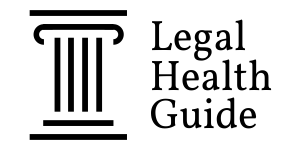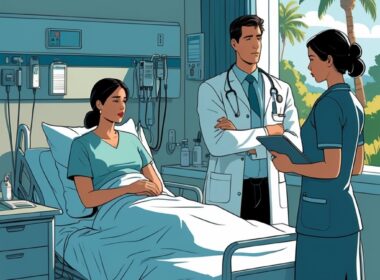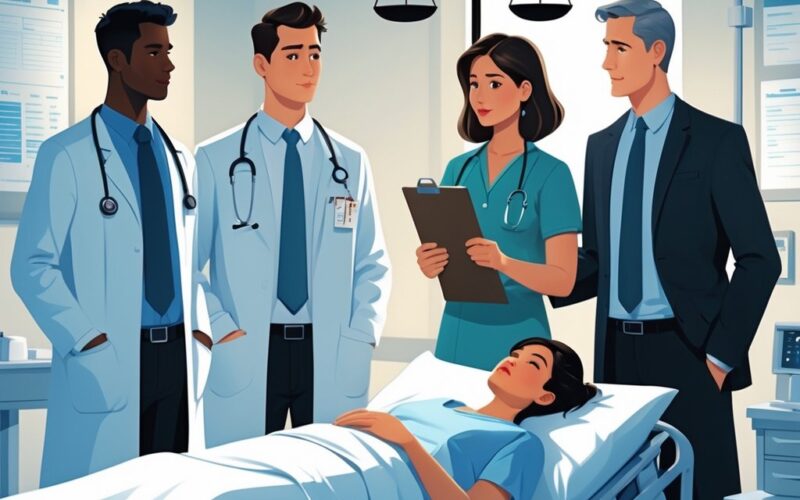When medical care goes sideways, who’s actually responsible for your injuries? Doctors, nurses, hospitals, pharmaceutical companies, and medical device makers can all face medical negligence claims, depending on who dropped the ball on the expected standard of care.
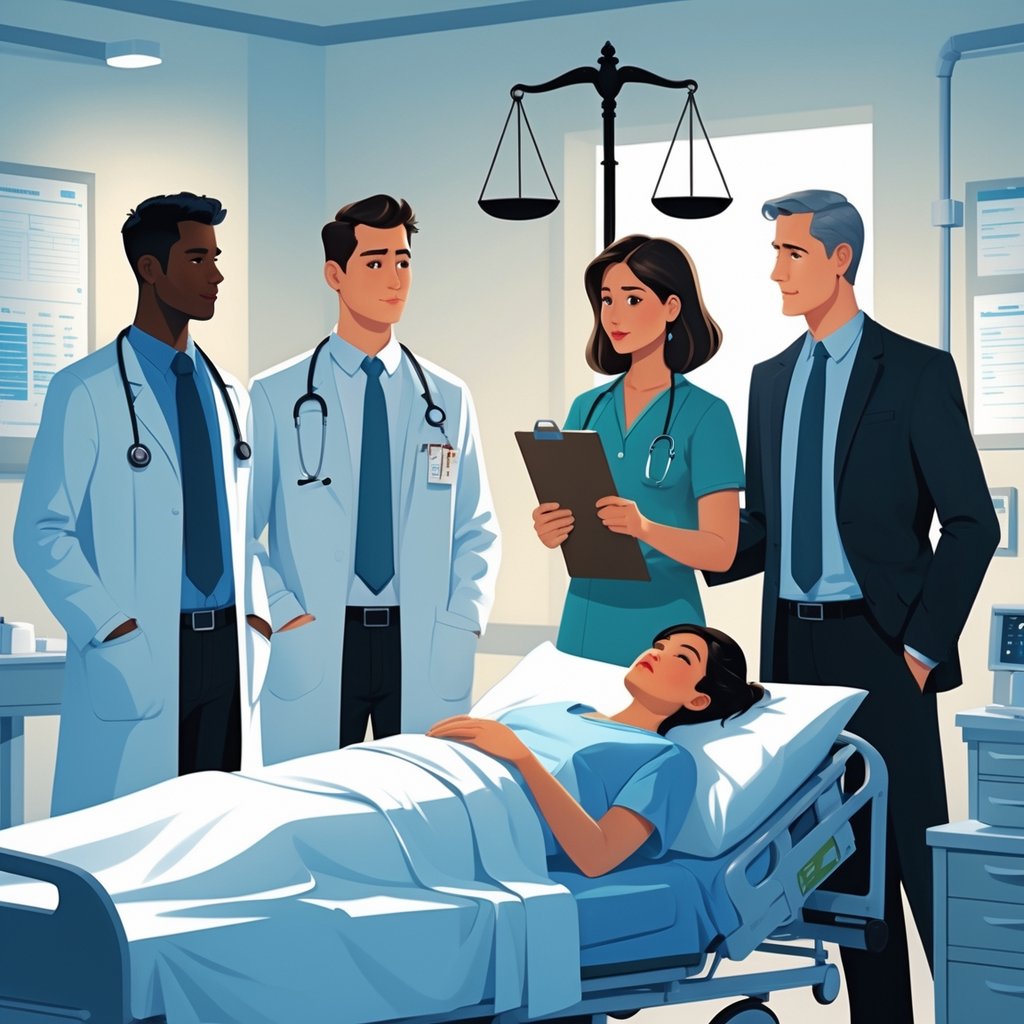
Liability in medical negligence cases gets messy fast. Healthcare involves so many different professionals and organizations.
A single medical error might involve your doctor, hospital staff, or even shoddy equipment or medication.
You need to show that someone failed to provide the level of care a reasonable medical professional would have. That failure must have caused your injury or made things worse.
Key Takeaways
- Healthcare professionals, hospitals, and medical companies can all be on the hook when their negligence causes patient harm
- Hospitals face liability through their own policies and through their employees’ actions
- Medical negligence claims have to prove that substandard care directly caused your injuries
Understanding Medical Negligence and Standard of Care
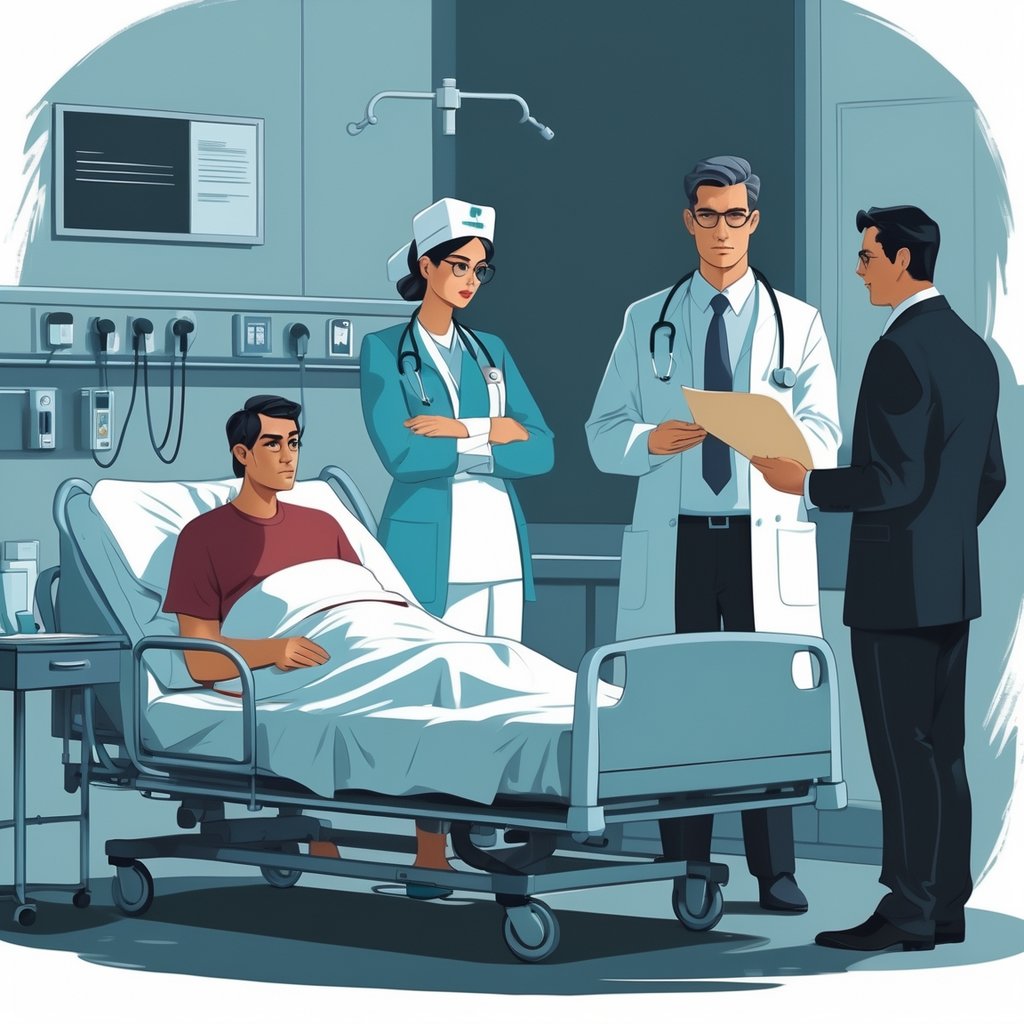
Medical negligence happens when healthcare providers miss the accepted standards of care, and a patient gets hurt. The law asks you to show there was a duty of care, that the duty was breached, and that this breach caused injury.
Definition of Medical Negligence
Medical negligence means a healthcare professional did not meet the accepted standard of care in their field. This causes harm to a patient who trusted them.
Four elements make a negligence claim legally valid. You have to prove the provider owed you a duty of care.
You must show the provider breached that duty, and that the breach directly caused your injury.
The injury has to result in measurable damages like extra medical bills or lost wages.
Medical negligence claims follow specific legal standards that define when healthcare actions cross the line into legal liability.
Common examples include:
- Misdiagnosis or delayed diagnosis
- Surgical errors or wrong-site surgery
- Medication mistakes or wrong dosages
- Not getting informed consent
- Birth injuries during delivery
Establishing the Standard of Care
The standard of care is the treatment a reasonably competent healthcare professional would provide in a similar situation. This standard depends on specialty, location, and resources.
Courts use expert witnesses to figure out what care should have happened. These experts work in the same field as the defendant.
They explain what a reasonable provider would’ve done instead.
In 2024, the American Law Institute revised the legal standard for medical negligence. This change affects how courts judge whether providers met appropriate care standards.
Factors that affect the standard:
- Medical specialty and training
- Available technology and resources
- Patient’s specific condition and history
- Emergency versus routine care
- Geographic location and practice setting
The standard doesn’t mean perfection. Providers don’t have to guarantee good results. They just have to meet professional norms.
Duty of Care in Healthcare
Healthcare professionals owe a duty to care for patients according to accepted standards. This duty starts when a doctor-patient relationship begins.
Usually, the relationship starts when you seek treatment and the provider agrees to help you. Once that happens, the provider must continue care or properly transfer you to someone else.
The duty of care covers:
- Proper exams and diagnosis
- Giving the right treatment recommendations
- Monitoring patient progress
- Getting informed consent
- Keeping patient information private
- Referring to specialists when needed
Providers can’t just abandon patients. They need to ensure care continues during transitions. Sometimes emergencies create special duties, even if there’s no formal relationship.
Direct Liability of Healthcare Professionals

Healthcare professionals can be directly responsible for negligence when their actions fall short of accepted standards. Each type of medical professional has specific duties and liability based on their role.
Doctors and Physicians
Doctors carry the highest level of responsibility in malpractice cases. They must stick to professional standards in diagnosis, treatment, and patient management.
Common areas of physician liability:
- Misdiagnosis or delayed diagnosis
- Surgical errors and complications
- Bad medication prescriptions
- Not getting informed consent
- Poor communication with patients
Your doctor can be liable for treatment decisions that stray from accepted practices. This includes missing important tests or ignoring obvious symptoms.
Specialists get extra scrutiny in their fields. A cardiologist, for example, must show higher knowledge for heart conditions than a generalist.
Documentation matters a lot in these cases. Sloppy records can make malpractice claims against your doctor stronger.
Nurses and Allied Health Staff
Nurses and other staff have their own professional duties. They can be directly liable for negligent actions during patient care.
Key areas where nurses may be liable:
- Medication errors
- Failing to monitor patient conditions
- Improper wound care or treatment
- Not following doctor’s orders right
- Inadequate patient assessment
Nurses can’t dodge responsibility just because they followed orders. Each professional must use independent judgment within their scope.
Allied health professionals like physical therapists and technicians also face direct liability. They need to follow standards specific to their job.
Medical errors by nurses often involve communication breakdowns or not escalating patient concerns.
Other Medical Practitioners
Healthcare providers beyond doctors and nurses can be directly liable. Each job comes with its own standards and risks.
Pharmacists can get sued for giving out wrong medications, incorrect dosages, or missing patient allergies. They have to double-check prescriptions and watch for dangerous drug interactions.
Dentists and oral surgeons face liability for extraction mistakes, not diagnosing oral issues, or not sterilizing equipment.
Medical technicians who run diagnostic tests can be liable for inaccurate results or equipment problems. This includes radiology techs, lab workers, and imaging specialists.
Anesthesiologists have especially high liability risks because anesthesia is tricky and dangerous. Dosage mistakes or failing to monitor patients can cause real harm.
Every provider has to stay competent and stick to protocols to avoid direct liability.
Employer and Institutional Liability
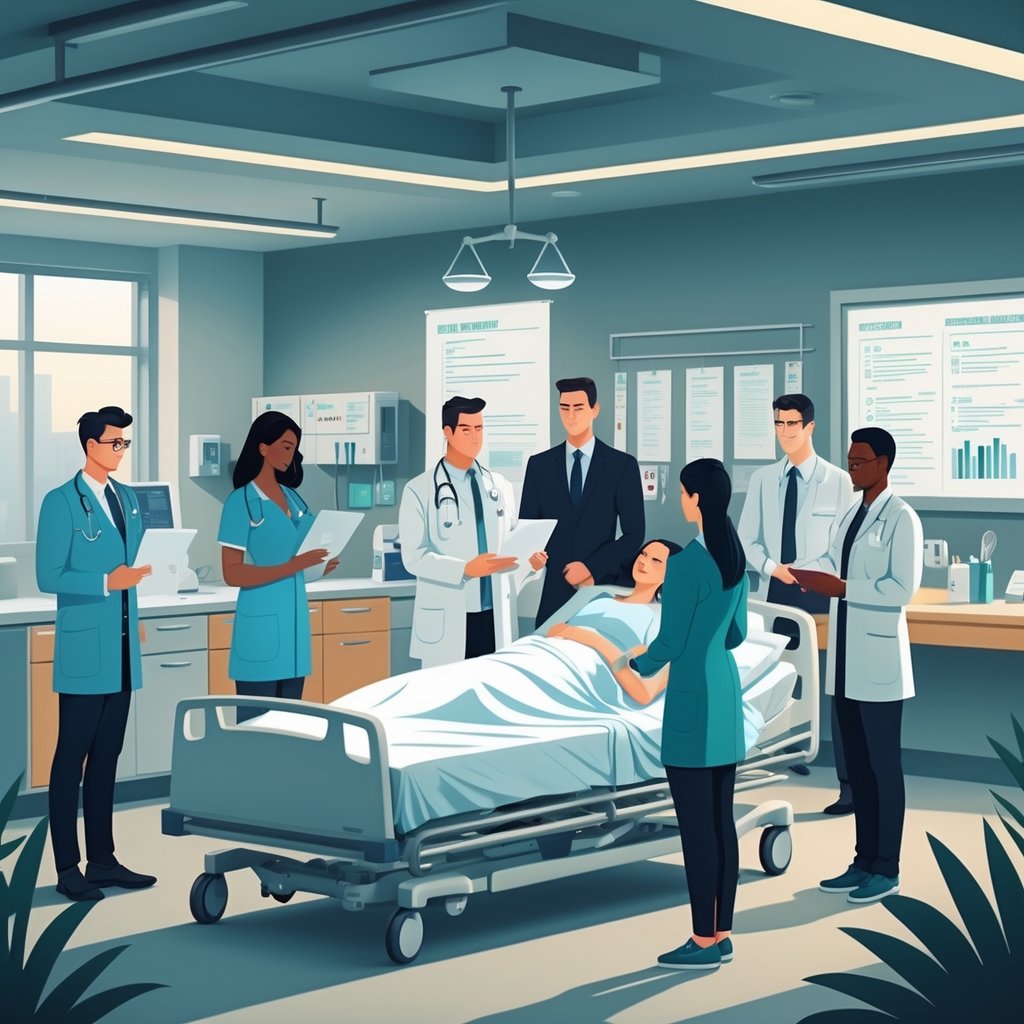
Healthcare employers can be legally responsible for medical negligence in two main ways. They’re accountable for employee actions and for their own institutional duties.
These rules let patients seek compensation from organizations with deeper pockets than individual providers.
Hospitals and Healthcare Facilities
Hospitals can be on the hook for medical malpractice through different legal paths. The employee versus independent contractor issue really matters here.
Employee vs. Independent Contractor Factors:
- How much control the hospital has over work methods
- Payment structure (salary or per job)
- Who provides tools and workspace
- Level of required expertise
Traditional employees include nurses and admin staff. Some nurses actually work for doctors under contract with the hospital, making the doctor the employer for liability.
Doctors often act as independent contractors at hospitals. This can limit hospital liability sometimes.
Deciding if someone is an employee or contractor means looking at all these factors together.
Vicarious Liability and Respondeat Superior
Respondeat superior makes employers responsible for employee mistakes that happen during work. Employees are seen as extensions of the employer while doing their jobs.
The key is that the negligent act happened while working. Courts look at whether the employee was doing job-related tasks at the time.
Hospitals can be vicariously liable for mistakes by nurses, techs, and employed doctors under this rule. The more control the hospital has, the stronger the liability.
Apparent authority can make hospitals liable even for independent contractors if patients reasonably think a doctor works for the hospital. This covers situations where patients can’t tell who’s who.
Corporate Negligence Doctrine
Healthcare organizations can be directly liable for their own bad practices, not just for what employees do. Corporate negligence focuses on failures at the institutional level.
Major Areas of Corporate Liability:
| Duty | Requirements |
|---|---|
| Selection | Check education, training, experience, and malpractice history |
| Monitoring | Regularly assess treatment quality and physician performance |
| Supervision | Provide proper oversight of care |
| Utilization Review | Approve treatments using proper care standards |
Hospitals have to set up solid policies for credentialing and monitoring doctors. If they don’t, they can be directly liable.
Organizations can be liable for letting doctors work outside their scope, not supervising enough, lacking emergency procedures, or ignoring documentation problems.
The corporate negligence doctrine makes hospitals keep systems in place to protect patients, no matter how their doctors are classified.
Product and Third-Party Liability in Medical Negligence
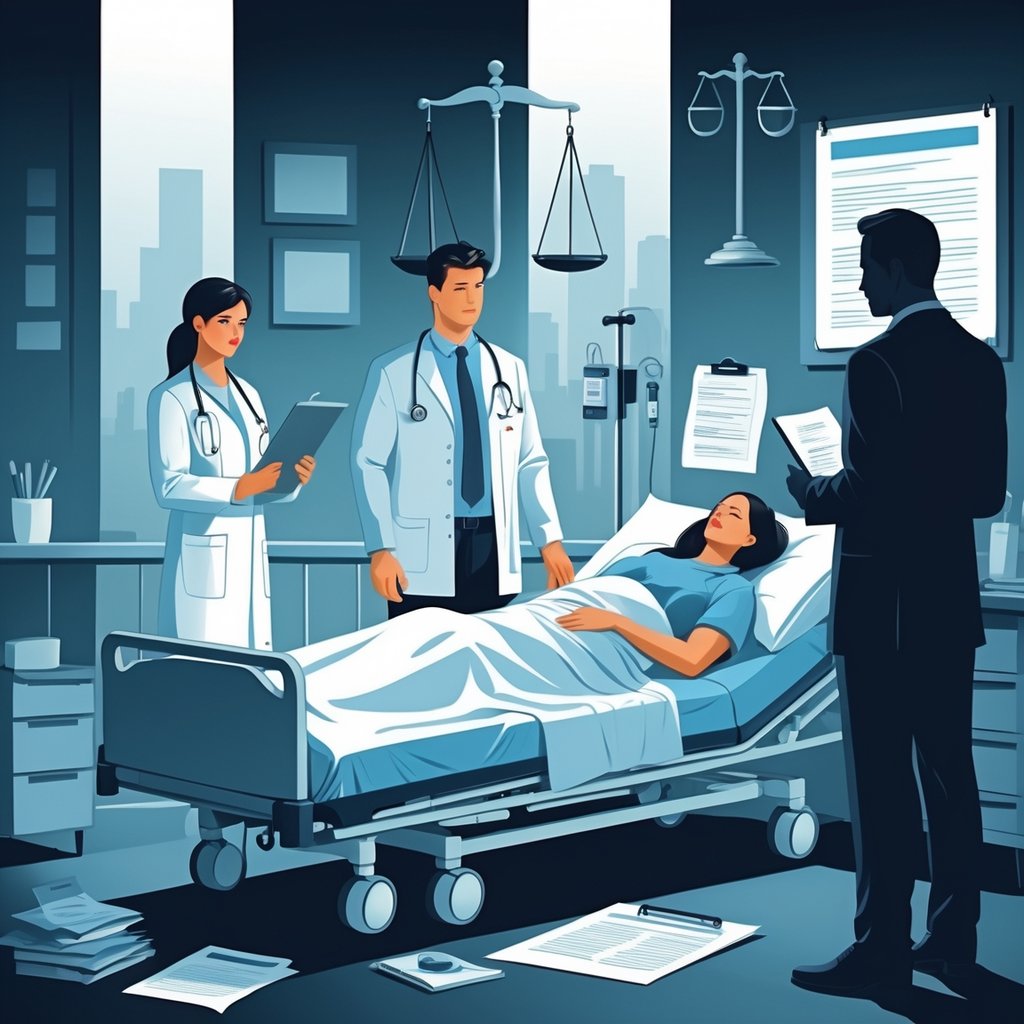
Medical negligence cases sometimes pull in more than just doctors and hospitals. Pharmaceutical companies can be liable for harmful drugs, device makers for faulty equipment, and third-party contractors for their services.
Pharmaceutical Manufacturers
Pharmaceutical manufacturers can be liable when drugs cause patient injuries due to inadequate warnings or defective products. You can hold these companies responsible when they fail to warn doctors about serious side effects or risks.
Drug companies must give healthcare providers all necessary safety information. If they don’t, patients might suffer harm that could have been avoided.
Common pharmaceutical liability situations include:
- Insufficient warnings about side effects
- Inadequate drug testing before release
- Failure to update safety information
- Defective manufacturing processes
The manufacturer’s liability depends on their direct role in your harm. If your doctor misused a properly labeled medication, responsibility may shift back to the healthcare provider.
Medical Equipment Manufacturers
Medical equipment manufacturers face liability for defective devices that harm patients. These companies can be on the hook for design flaws, manufacturing errors, or failure to warn about known risks.
Product designers, manufacturers, and healthcare professionals can all be held accountable through product liability claims. Design defects make manufacturers liable when their device design creates risks for users.
Equipment liability often involves:
- Faulty surgical instruments
- Defective implants or prosthetics
- Malfunctioning diagnostic equipment
- Inadequate device maintenance instructions
Your case might involve both the manufacturer and the medical facility. The hospital could share blame if they ignored recalls or didn’t maintain equipment.
Third-Party Contractors and Labs
Many hospitals use third-party contractors for specialized services like radiology, lab testing, or anesthesia. These contractors can be liable for negligence in their services.
Laboratory errors leading to misdiagnosis can implicate lab technicians or the company managing the lab. The healthcare facility might also be responsible for picking and supervising these contractors.
Third-party liability scenarios include:
- Incorrect lab test results
- Radiology reading errors
- Anesthesia complications
- Equipment servicing mistakes
These cases often get complicated. You might need to go after several parties to get full compensation.
Establishing Liability in a Medical Malpractice Claim
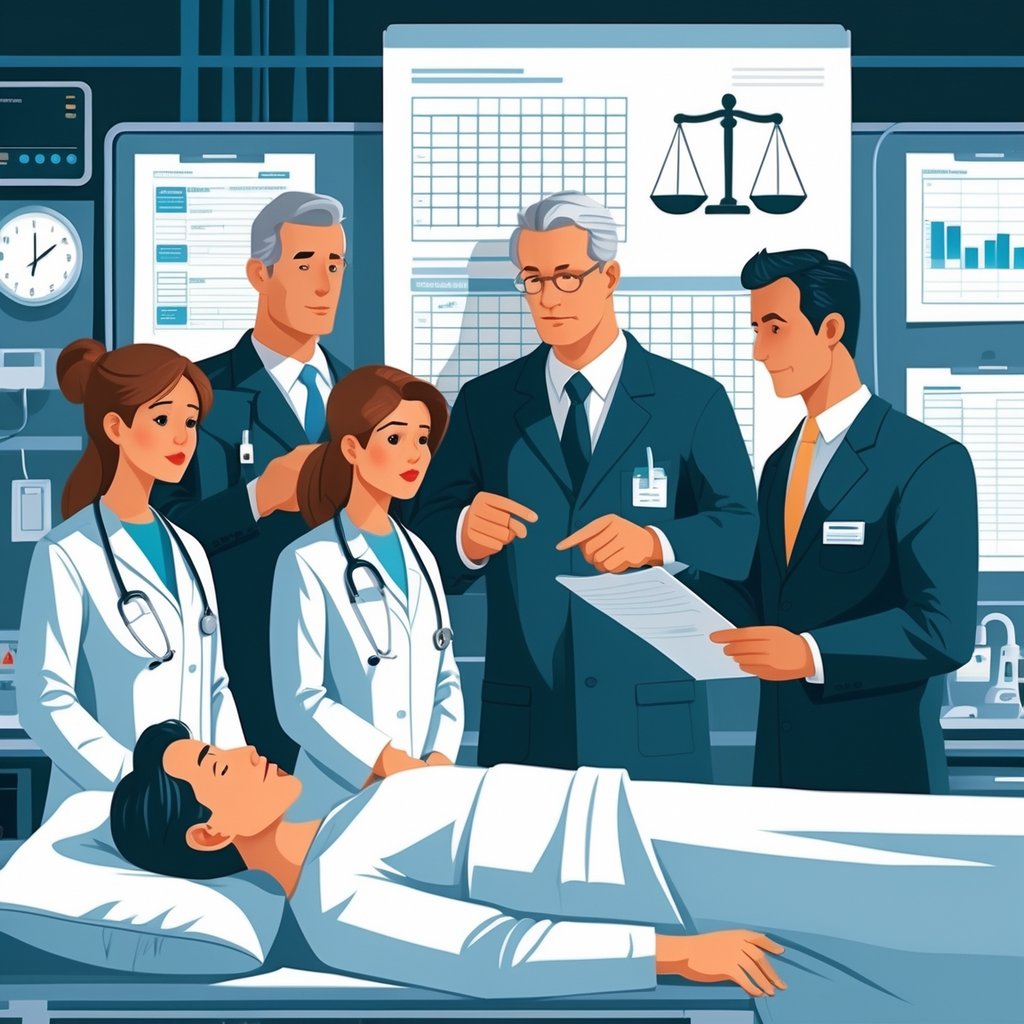
Proving liability in medical malpractice cases means meeting strict legal standards and showing how healthcare providers failed their duty of care. Several parties might share responsibility when mistakes happen, and the type of negligence involved shapes how courts decide fault.
Elements of a Medical Malpractice Lawsuit
Your medical malpractice claim needs to prove four elements. These are the building blocks of any successful lawsuit.
Duty of Care means the healthcare provider had a professional obligation to treat you. This starts when a doctor-patient relationship forms through consultation or treatment.
Breach of Duty happens when the provider doesn’t meet accepted medical standards. The care you got must fall below what other qualified professionals would do in a similar situation.
Causation connects the provider’s actions to your injuries. You need to show the medical mistake—not something else—caused your harm.
Damages are the losses you suffered from negligence. This could be medical bills, lost wages, pain, or a reduced quality of life.
Expert testimony usually proves these elements. Medical professionals explain what standard care looks like and where the defendant’s actions fell short.
Role of Misdiagnosis and Medical Error
Misdiagnosis cases are tricky. The type of diagnostic error changes how you prove your claim.
Delayed diagnosis means doctors eventually get it right, but too late to help. You have to show earlier detection would have made a real difference.
Wrong diagnosis happens when providers misidentify your condition. This can lead to the wrong treatment or delays in proper care.
Missed diagnosis is when doctors don’t spot a serious problem at all. Diagnostic errors can cause critical delays in treatment and lead to permanent damage.
Other medical mistakes also create liability. Prescription medication errors can cause serious, even fatal, consequences.
Shared and Comparative Liability
Medical malpractice liability may involve more than one individual or entity. How responsibility gets divided affects your case and what you might recover.
Joint liability applies when several parties contribute to your injury. For example, both a surgeon and anesthesiologist might make mistakes during the same operation.
Several liability means each party covers only their share of damages. Courts assign percentages based on each person’s fault.
Medical malpractice liability may be split between a doctor and a nurse whose combined negligence caused the injury. This changes how much each defendant pays.
Your own actions might play a role too. If you ignored treatment instructions or hid important info, some states might reduce your compensation.
Proving Negligence and Securing Compensation
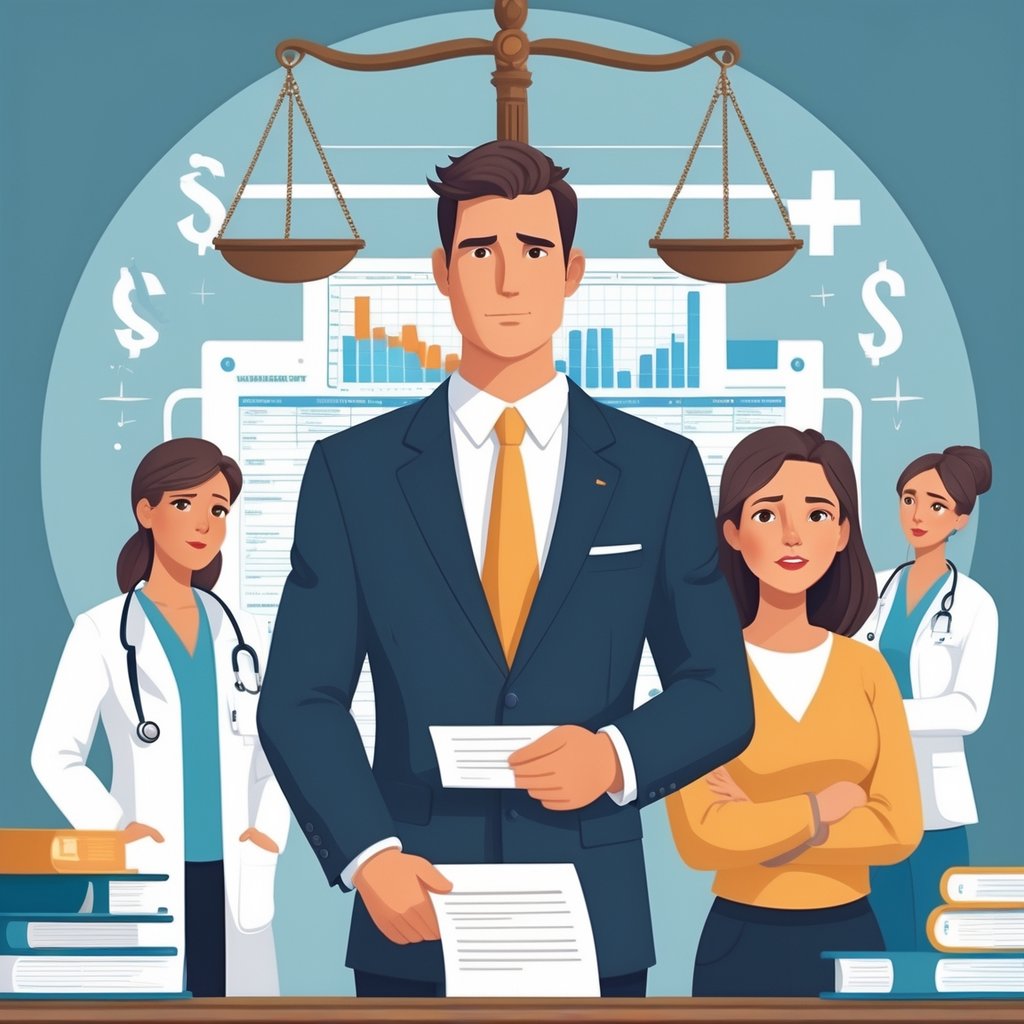
Proving medical negligence means showing four key elements and meeting legal deadlines. Expert testimony is crucial in showing what care should have looked like. Compensation can cover both your financial losses and pain and suffering.
Expert Testimony and Witnesses
Expert witnesses are vital in proving negligence in medical malpractice cases. These medical professionals explain what the standard of care should have been.
Your attorney needs expert testimony to prove:
- Duty of care – The healthcare provider owed you proper medical treatment
- Breach of duty – They didn’t meet the expected standard of care
- Causation – This failure directly caused your injury
- Damages – You suffered real harm as a result
Experts usually come from the same specialty as the defendant. They review your records and compare your treatment to what competent doctors would have done.
The expert must know your specific medical condition. For example, a cardiologist would testify in a heart surgery case.
Medical records, surgical videos, and other documents back up the expert’s opinion. These show exactly where things went wrong.
Damages: Pain and Suffering
Pain and suffering damages pay for physical discomfort and emotional distress from medical negligence. These go beyond your bills or lost wages.
Physical pain covers ongoing discomfort from your injuries. That includes current pain and what you’ll likely deal with down the road.
Mental anguish means depression, anxiety, or trauma from the medical mistake. Some people develop a real fear of doctors after a bad experience.
Loss of enjoyment is about activities you can no longer do. Maybe you can’t play sports, enjoy hobbies, or spend time with family like you used to.
Calculating pain and suffering depends on:
| Factor | Description |
|---|---|
| Severity | How serious are your injuries? |
| Duration | How long will the pain last? |
| Impact | How much has your life changed? |
| Age | Younger patients may get higher awards |
Your lawyer uses medical records, expert opinions, and personal notes to prove these damages. Keeping a pain diary helps show what you deal with day to day.
Statute of Limitations and Legal Deadlines
The statute of limitations sets strict deadlines for filing malpractice lawsuits. Miss these, and you usually lose your shot at compensation.
Most states give you 2 to 3 years from when you discover the negligence to file. This “discovery rule” matters because some mistakes aren’t obvious right away.
There’s also an absolute deadline, no matter when you discover the error. This “statute of repose” is often 5 to 10 years from when the mistake happened.
Special rules sometimes apply:
- Minors often get extra time until adulthood
- Foreign objects left in patients may mean longer limits
- Fraudulent concealment by doctors can extend deadlines
Each state has its own rules, so talk to a malpractice attorney as soon as possible. They can figure out your deadline and make sure everything gets filed on time.
Some cases require special notices to healthcare providers before you sue. Your attorney handles these technical steps to protect your claim.
Frequently Asked Questions

Medical malpractice cases follow specific legal standards and involve complicated procedures. Healthcare professionals face real consequences when found liable, and hospitals can end up responsible in certain situations.
What constitutes a medical malpractice case under current law?
A medical malpractice case needs four things. You must prove a doctor-patient relationship existed, which sets up the provider’s duty of care.
The provider must have breached the expected standard. That means they didn’t give you the treatment a reasonable professional would have.
You need to show this breach directly caused your injury. The link between their actions and your harm must be clear.
Finally, you must show actual damages. This could be bills, lost wages, pain, or other measurable losses.
What are the potential consequences for healthcare professionals found guilty of medical malpractice?
Healthcare professionals face serious consequences when found liable. Financial penalties usually come first, including damages for your medical expenses, lost income, and pain.
Licensing boards may take action against their medical license. This can mean anything from a suspension to permanent loss, depending on how bad the mistake was.
Malpractice insurance premiums often go up after a successful claim. Some insurance companies might even drop providers with multiple judgments.
A provider’s reputation can take a big hit. They might lose hospital privileges, struggle to find work, or see patients lose trust.
In what scenarios can a hospital or healthcare facility be held legally responsible for medical malpractice?
Hospitals and medical institutions can be held liable under vicarious liability for their employees’ actions. If doctors, nurses, or staff commit negligence while on duty, the hospital may share responsibility.
Direct liability happens when hospitals mess up their own duties. This includes things like poor staffing, bad training, or failing to keep equipment in working order.
Hospitals can also be responsible for letting unqualified doctors practice. If their credentialing fails and patients get hurt, the hospital may have to answer for it.
Negligent supervision is another area. If hospitals don’t properly oversee their staff or ignore known problems, they can be on the hook for injuries.
How does one prove negligence in a medical malpractice lawsuit?
Proving negligence means showing what care should have looked like. You need expert testimony to explain what a competent provider would have done.
Medical records are key evidence. They show what treatment you got and how it missed the mark.
Expert witnesses help judges and juries understand the medical issues. They review your case and say if the provider met professional standards.
You must show causation by proving the provider’s negligence directly led to your injury. This usually takes detailed medical analysis and expert opinion.
What role do medical malpractice lawyers play in pursuing a negligence claim?
Medical malpractice lawyers know their way around complex healthcare law. They understand what it takes to prove negligence and how to gather the right evidence for your case.
Your attorney digs into medical records, searching for signs of malpractice. They team up with medical experts to see if the standard of care slipped.
Lawyers deal with insurance companies and opposing lawyers for you. They fight for your rights and push for fair compensation if you’ve been hurt.
They also keep track of strict filing deadlines and all those tricky procedural rules that change from state to state. Miss a deadline, and your claim could be gone for good, so having a lawyer really matters.
Are there any legal defenses that medical professionals can use against malpractice claims?
Healthcare providers sometimes argue they met the standard of care for your condition. They might call in experts who back up that their decisions were reasonable and made sense medically.
The assumption of risk defense comes up if you knew about the risks and still agreed to treatment. If you understood what could go wrong and went ahead, this can reduce their liability.
Some providers say your injury happened because your condition naturally got worse, not because of anything they did. They need to show the outcome would have been the same with or without their treatment.
Statute of limitations defenses focus on when you filed your claim. Every state gives you a deadline for bringing a medical malpractice lawsuit, and missing it can end your case before it really starts.
